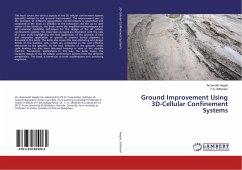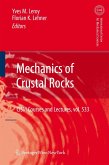Cellular quay walls constructed of interlocking steel sheets are used in marine environments as cofferdams, retaining walls, mooring dolphins, and lock guide walls. When the live load of the Cellular quay walls is expected to increase due to change in serviceability conditions, analysis is required to ensure adequate safety of the structural elements against overstressing. In most cases, a retrofitting of the cellular quay wall is required for the structure to withstand the newly imposed changes. This study presents four methods for retrofitting the cellular quay walls to increase its carrying capacity and decrease the stresses in its skin assuming that the overall stability of the wall is not compromised. Analysis of the original cellular quay wall and proposed retrofitting methods are preformed utilizing three-dimensional finite elements method using the commercial software package ANSYS 11.0.
Bitte wählen Sie Ihr Anliegen aus.
Rechnungen
Retourenschein anfordern
Bestellstatus
Storno








